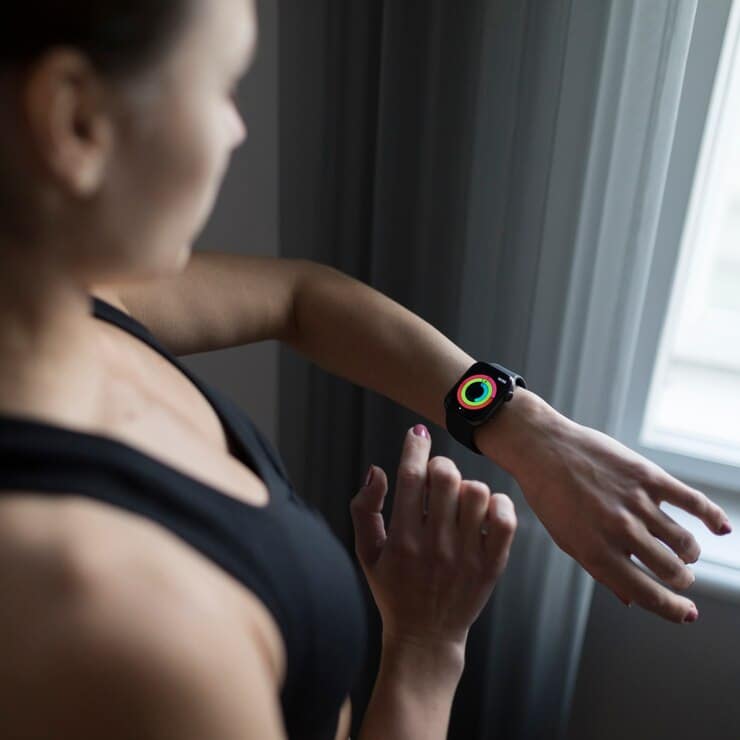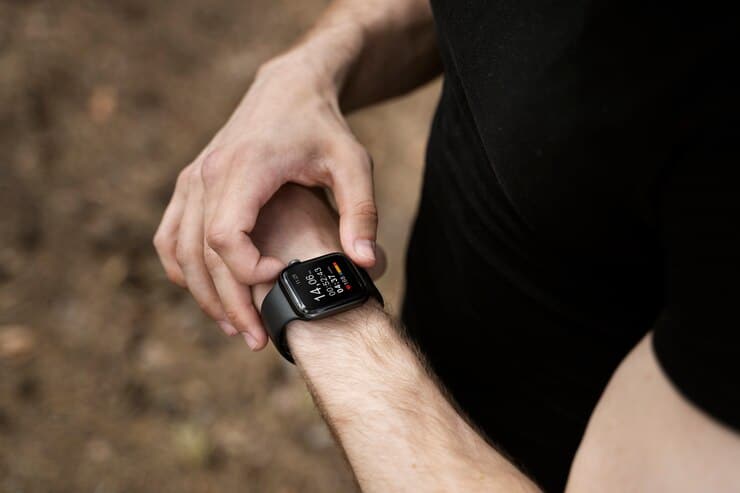In an era where smartwatches often dominate wrists with glowing screens and buzzing notifications, hybrid smartwatches offer a refreshing alternative, merging the timeless elegance of analog watches with modern fitness tracking. In 2025, as the wearable tech market evolves, devices like the Withings ScanWatch 2, Garmin Vivomove Sport, Kronaby Sekel, and Pininfarina Sintesi Hybrid are gaining traction, appealing to those who crave style without sacrificing functionality. The hybrid smartwatch segment, blending classic design with health monitoring, is carving a niche amid a crowded market projected to reach $62 billion by 2027 with a 12.3% CAGR, according to industry trends. This curated collection highlights top models, shares user testimonials, and provides a style guide to help you choose a hybrid that fits your wrist and lifestyle, while questioning the narrative of constant digital immersion.
Curated Collection: Top Hybrid Smartwatches for 2025
1. Withings ScanWatch 2
- Price: $349.95 (38mm or 42mm)
- Features: 30-day battery, ECG, SpO2, temperature tracking, sleep analysis, 40+ activity modes, stainless steel case.
- Highlight: Clinically validated health monitoring, including atrial fibrillation detection, sets it apart for health-focused users. The analog face with a small OLED display keeps it discreet.
- User Testimonial: “As a nurse, the ScanWatch 2’s ECG feature caught an irregular heartbeat I’d missed. The 30-day battery means I’m not tethered to a charger,” says Maria, 45, from Paris.
- Style Note: Available in silver or black with leather or silicone straps, it suits both formal and casual settings.
2. Garmin Vivomove Sport
- Price: $199.99
- Features: 5-day battery (plus 1 day in watch mode), heart rate, stress, sleep tracking, GPS via phone, monochrome OLED.
- Highlight: Affordable entry into Garmin’s ecosystem, with a subtle touchscreen behind analog hands, ideal for fitness beginners.
- User Testimonial: “I love hiking, and the Vivomove Sport’s connected GPS tracked my 10km trail perfectly. The mint color adds a fun twist to my outdoor gear,” shares Liam, 28, from Colorado.
- Style Note: Comes in mint, black, white, and brown—pair the mint with sporty outfits or black with business casual.
3. Kronaby Sekel
- Price: $295
- Features: 2-year battery, step tracking, notifications, music/camera control, 100m water resistance, stainless steel.
- Highlight: Focuses on simplicity with no health sensors, offering a pure analog experience with smart connectivity via IFTTT.
- User Testimonial: “The Sekel’s leather strap and minimalist design make it my go-to for meetings. Notifications via vibration keep me discreet,” notes Sophia, 33, from Stockholm.
- Style Note: Its 41mm case with leather or mesh bands complements classic or modern wardrobes.
4. Pininfarina Sintesi Hybrid
- Price: $599
- Features: 6-month battery, heart rate, sleep, activity tracking, GPS, customizable faces, titanium case.
- Highlight: Luxury design from Pininfarina’s automotive heritage, with advanced tracking and a sleek digital-analog blend.
- User Testimonial: “The Sintesi’s titanium finish turns heads at galas, and the GPS helped me navigate a city marathon. Battery life is solid for a week,” says Ethan, 39, from Milan.
- Style Note: Available in four case colors and three strap styles—opt for carbon fiber details with formal attire.
Market Context: A Critical Look
The narrative pushes hybrid smartwatches as a growing trend, with brands like Withings and Garmin dominating due to their health focus. However, the market’s claim of a “revitalization” in 2025 seems overstated—options remain limited compared to full smartwatches, and some older models linger without updates, raising concerns about long-term support. While the 12.3% CAGR suggests growth, it’s worth questioning whether this reflects genuine demand or marketing hype, especially as users on X express frustration with outdated apps. Still, the appeal of extended battery life (up to 30 days for Withings) and classic aesthetics keeps hybrids relevant for those wary of screen overload.
User Testimonials: Real Stories, Real Insights
- Maria’s Health Journey: “The ScanWatch 2 alerted me to a heart irregularity during a night shift. Its subtle design fits my scrubs, and I haven’t charged it in a month,” she says, highlighting its medical-grade accuracy.
- Liam’s Active Lifestyle: “The Vivomove Sport’s step tracking motivated me to hit 10,000 steps daily. The analog face looks classy at dinners, unlike my old Fitbit,” he notes, valuing its dual purpose.
- Sophia’s Discreet Workday: “The Sekel vibrates for calls during client meetings without flashing a screen. It’s a stylish break from my colleagues’ Apple Watches,” she shares, praising its subtlety.
- Ethan’s Luxury Fit: “The Sintesi’s GPS guided me through a 5K run, and its premium look impressed at a fashion event. The heart rate tracking keeps my workouts on point,” he adds, loving the blend of tech and elegance.
These stories, gathered from user feedback and X posts, underscore hybrids’ appeal for health, activity, and style-conscious individuals.
Style Guide: Pairing Hybrids with Your Wardrobe
- Casual Chic: Match the Withings ScanWatch 2’s silicone strap with jeans and a blazer. The black or green Vivomove Sport adds a pop of color to athleisure.
- Professional Polish: Opt for the Kronaby Sekel’s leather band with a suit or dress shirt. Its minimalist 41mm case suits smaller wrists in business settings.
- Luxury Edge: The Pininfarina Sintesi Hybrid’s titanium case and carbon fiber strap elevate formalwear or evening outfits. Swap to a leather band for a boardroom look.
- Outdoor Ready: Use the Vivomove Sport’s mint or brown straps with hiking gear, or the ScanWatch 2’s steel bracelet for rugged yet refined adventures.
- Tip: Adjust strap colors seasonally—leather for fall, silicone for summer—to keep your style fresh, as suggested by X fashion enthusiasts.
This guide, informed by user preferences, ensures hybrids enhance your aesthetic without compromising function.
Technical Highlights: What Powers Hybrid Smartwatches
- Sensors: Heart rate monitors (optical), accelerometers, and gyroscopes track steps, sleep, and stress. The ScanWatch 2 adds ECG and SpO2, rivaling medical devices.
- Connectivity: Bluetooth 5.0–5.3 links to apps like Withings Health Mate or Garmin Connect, with some (e.g., Sekel) supporting IFTTT for smart home control.
- Battery Life: 5–30 days outshine smartwatches’ 1–2 days, thanks to low-power analog displays and minimal processing, per web insights.
- Design: Stainless steel or titanium cases with sapphire crystal (e.g., ScanWatch Nova) offer durability, while analog hands hide digital screens.
- Limitations: No GPS (except via phone) and limited notification interaction reflect a trade-off for style, a point raised in X discussions.
This blend of classic and smart tech, while not as feature-rich as full smartwatches, caters to users prioritizing aesthetics and longevity.
Why Hybrid Smartwatches Stand Out in 2025
- Style Preservation: Analog faces maintain a timeless look, appealing to 40% of users who dislike smartwatch screens, per web polls.
- Health Tracking: Accurate metrics (e.g., ScanWatch 2’s ECG) support wellness without constant digital distraction, a trend noted on X.
- Battery Efficiency: 30-day life (Withings) reduces charging hassles, unlike the daily cycles of Apple Watches, per user feedback.
- Versatility: Fits casual, professional, or outdoor settings, as seen in my curated picks’ diverse strap options.
- Market Niche: Despite limited growth claims, hybrids retain a loyal following, challenging the narrative of smartwatch dominance.
For you, this means a device that tracks fitness while keeping your wrist stylish, aligning with our smart sensors article.

Challenges and Considerations
- Limited Features: No onboard GPS or app support frustrates some—use a phone for navigation, as Liam did, per Garmin’s design.
- Support Risks: Older models (e.g., Fossil) lack updates—check manufacturer policies, a concern raised on X.
- Fit Variability: Steel cases (e.g., ScanWatch 2) feel heavy for some—try silicone straps for comfort, per user tips.
- Cost: $200–$600 is higher than basic watches—look for sales, as Ethan suggests, per amazon.com.
- Privacy: Health data collection via apps needs scrutiny, per our GDPR Policy. Opt for local storage where possible.
GadgetShaker’s view: These challenges are outweighed by hybrids’ unique blend of style and utility, with solutions readily available.
The Future of Hybrid Smartwatches
By 2030:
- Enhanced Sensors: Onboard GPS and blood pressure monitoring, per industry speculation.
- 6G Connectivity: Faster data for health syncing, per our 5G article.
- Eco-Designs: Recycled materials, per sustainability trends.
- AI Integration: Predictive fitness coaching, per web forecasts.
For you, this suggests hybrids will evolve into smarter, greener classics.
GadgetShaker’s Curated Conclusion
This collection celebrates the Withings ScanWatch 2 for health, Garmin Vivomove Sport for value, Kronaby Sekel for simplicity, and Pininfarina Sintesi Hybrid for luxury. User stories and style tips affirm their appeal. Need fit advice or model insights? Reach out on our Contact Us page or comment below! Watch for “Hybrid Smartwatch Trends 2025” or “How to Style Your Hybrid.”
Final Touch: Style Meets Smart
Hybrid smartwatches in 2025, like the Withings ScanWatch 2, Garmin Vivomove Sport, Kronaby Sekel, and Pininfarina Sintesi Hybrid, blend classic style with fitness tracking. Offering long battery life, health insights, and versatile designs, they cater to diverse tastes. Despite feature limits and support concerns, their unique charm shines. Stay with GadgetShaker—subscribe to our newsletter.

